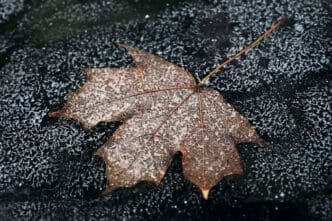In light of frequent misconceptions about cold weather risks, the National Weather Service has updated the names of several cold weather advisories to improve understanding and communication.
Beginning October 1, the National Weather Service initiated significant changes in the naming of its winter weather advisories. The recent adjustments aim to enhance clarity and address the misconception that extreme cold is solely associated with wind. The agency highlights the importance of recognizing that dangerously cold conditions can exist with or without wind and that cold weather threats may accompany or follow wintry conditions.
The changes involve renaming existing advisories to more accurately reflect the nature of the threats posed by cold weather. Previously known as Wind Chill Watches and Warnings, these advisories are now called ‘Extreme Cold Watch’ and ‘Extreme Cold Warning.’ Meanwhile, what was formerly the Wind Chill Advisory has been rebranded as ‘Cold Weather Advisory.’ These new names were selected to better communicate the range of cold conditions that can occur.
Additionally, consolidation has taken place with advisories related to freezing conditions. Hard Freeze Watches are now simply ‘Freeze Watch,’ and Hard Freeze Warnings have been consolidated into ‘Freeze Warning.’ This simplification is intended to deliver a clearer message to the public regarding potential freezing conditions.
Further clarification is provided by the agency concerning specific advisories. For example, a Frost Advisory indicates expected or occurring frost, posing a risk to sensitive plants. A Freeze Watch suggests the possibility of widespread freezing temperatures within the next 24 to 36 hours. In contrast, a Freeze Warning is issued when temperatures are forecasted to remain below 32°F for a prolonged period, with significant threats to commercial crops and residential plants, especially if temperatures fall below 28°F.
These updates by the National Weather Service are part of an ongoing effort to improve public safety and awareness during extreme weather conditions. Despite the changes in naming, the primary focus remains on ensuring that people understand the risks associated with severe cold. In doing so, the agency hopes to better prepare communities for the challenges posed by winter weather.
To enhance individual and community preparedness, the National Weather Service advises several preventive measures during cold weather. These include wrapping or draining outdoor water pipes and covering sprinkler systems to prevent freezing. People are encouraged to dress warmly, check on elderly individuals, and ensure adequate heating in homes. The agency also reminds the public to keep pets indoors or provide them with adequate shelter, and to bring sensitive plants indoors where possible.
Ultimately, these changes by the National Weather Service underscore a commitment to public safety and clarity in communication. By renaming and consolidating advisories, the agency aims to better equip the public with the knowledge needed to protect themselves and their communities during extreme cold events.
Source: News4jax


